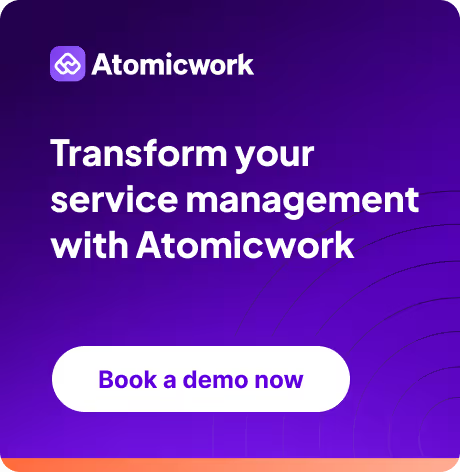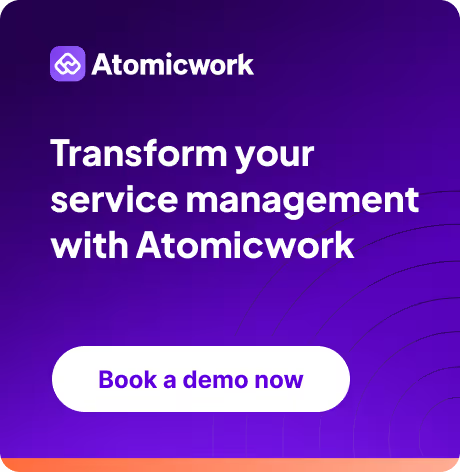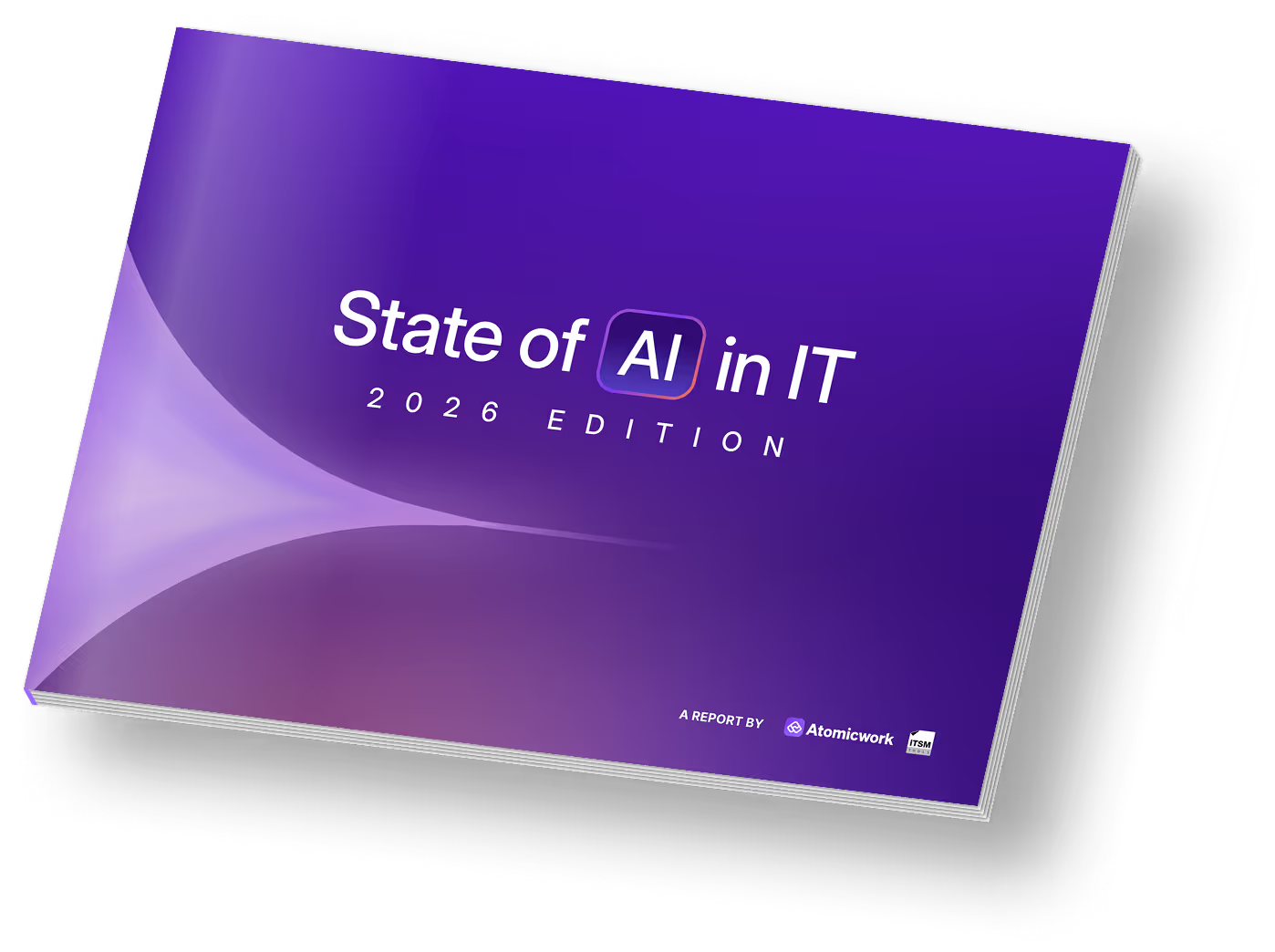Atomic Conversations: Sidu Ponnappa on approaching people operations as an engineering problem

Serendipity.
That’s how Sidu Ponnappa became an employee experience leader.
How else can one explain the career trajectory from an engineering leader to people operations?
"I’m not a star engineer. They are busy doing real work. My time was available. That’s how I wound up in the role," said Sidu during our Atomic Conversations interview.
It’s clear that Sidu is certainly underplaying his engineering chops, a quick glance at his LinkedIn profile proves that. Sidu is the founder of a stealth-mode AI-first startup, and is a recognised technologist and investor. His last startup, C42 Engineering, was acquired by the Indonesian behemoth Gojek in 2015. At Gojek, Sidu served on the Board of Directors and played several roles over the years including Managing Director at Gojek India, and SVP of Internal Products at Gojek.
Sidu’s years as an engineer have hard-wired him to think of frameworks to solve problems, and employee experience is no different. However, what seems to really sets Sidu apart is his deep belief that employee engagement should account for the ‘uniqueness’ of individuals/companies, that software shouldn’t be a blanket ‘one-fit-for-all’ solution but rather ‘engineered’ to bring the best out of people.
How to bring the ‘engineer’ mindset to people operations
At any company, there are three aspects to the people problem, he says. The first is good management, which is rather hard to solve as good managers are hard to come by. The second is compliance, which is usually outsourced. The third is literally everything else that isn’t people management or compliance.
"It is very interesting that people ops is ops. If you have to run a performance review, it has a human element, but it doesn’t matter how well you do it if the process is fudged. Fundamentally, these are engineering problems," said Sidu.
"The advantage with engineers is if you can make a logical argument as to why this is an engineering problem, they will get on it and they will turn the knob to 11 and go at it."
True to his engineering roots, the starting point of arriving at a solution, for Sidu, is frameworks aka a mental model.
"This is how I look at it. It is all engineering. When I’m shipping a blog post, it is social engineering. I’m using the label because people get it. Fundamentally, there is a system filled with people who interact with each other in a certain way with certain incentives. You are trying to shift the way that system operates," said Sidu.
While it does sound logical, how does one look at employee experience on the ground and what role does software play in it?
Defining the problem, like an engineer
Most people would think that the role of people operations is to ensure that employees don’t waste time, but Sidu disagrees.
‘State of mind’ is the holy grail, (or north star metric, in engineering lingo), and not time, according to Sidu.
He delves into this with a rather simple example of office timings.
"Work doesn’t happen when you want it to. You have bursts of creativity, it is the ability to zone in… flow state and there is also the inspiration. Your output volume is highest when you are in a flow state.. you know your quality is highest when you are in a state of inspiration. You know that the sweet spot is to hit both together and it can’t be engineered," said Sidu.
"You can’t expect that telling people to come at this time, leave at this time, and in between I need you to be creative, find inspiration and be in a ‘flow’ state. It is awesome to say, but in practice not really actionable. Now, if we accept this. It isn't people’s time that you don’t want to waste, it is their emotional bandwidth that you don’t want to waste."
Sidu also brings up reimbursement as an example to drive the point home. Every time employees have to file reimbursement, they end up getting angry because of how cumbersome it is. On the other hand, the finance team which has its own set of rules and processes, is equally angry, thanks to how employees end up filing it. In the end, the company is left with a system that is making everyone angry.
"And you’ve probably paid a bunch of money for this (software) thinking it is solving a problem. It is, but it is also creating two more problems - an upset finance team and upset employees," said Sidu.
This again ties back to the state of mind point that Sidu alluded to. "Just think of all the social interactions..if they (experiences) would have been positive, (these interactions) would have been positive, they’d be jam sessions but instead they’ve turned into complaining sessions. Such a waste," he added.
How do you get the software right? Make it unique
Conway’s law states that "Any organisation that designs a system (defined broadly) will produce a design whose structure is a copy of the organisation's communication structure."
According to Sidu, this law is a guiding light.
"Your culture reflects your processes. The way they (people within a company) organise themselves reflects the way they communicate. It is all driven by communication - performance, promotion, etc. If you change the way people communicate with a certain solution/software, you are changing your culture," said Sidu.
It is as simple as that--software is not just software, it powers your culture.
"The moment you go down this road, you should understand that you are outsourcing a piece of your culture, which is fine. What is dangerous is doing it without realising it."
So, the logical conclusion is to find/make/customise software that fits into your unique culture. Sidu believes that each company is unique and software is insanely expensive. It has to accommodate the company's uniqueness to justify the dollars spent. It isn’t a trivial decision.
"The way makers operate is unique to a company. The manufacturing process, if you will, a company follows is unique. The way you judge the quality is unique and the way you judge the people is also unique. Theoretically, you can customise a SaaS solution to this, but in reality, they are hard to customise," said Sidu.
Another important aspect that Sidu highlights is the lack of customisation for enterprise SaaS solutions. "When you look at consumer products, every little interaction they have with the product affects the way they spend on it or interact with it, but we tend to ignore this for enterprise systems, which is super weird," said Sidu.
The Gojek employee experience software conundrum and how they solved it
Gojek was at a rather interesting stage when Sidu had to look for solutions. They were too big for boutique SaaS products, whereas they were relatively small for the big enterprise SaaS providers. Neither could be properly customised in a reliable way. They were essentially stuck in no man’s land.
"There was no good solution. For the mainstream stuff, we went with big vendors, for the niche use cases, we went with smaller vendors. For the things that really mattered, we built custom software," said Sidu. "Interestingly that was a hard financial decision because the smaller SaaS that we were using if we took the rolled-up cost per employee, it turned into a budget that could have funded a full-fledged team. It was a hard-headed economic decision. We took budget from that and moved it to this."
This clarity of thought again comes from Sidu’s background as an engineer.
"A real engineer looks at costing. You can’t build something without understanding the economics. A typical engineer is going to say what’s the budget, what’s the trade-off," said Sidu.
Sidu went deeper into the ‘engineer’ rabbit hole and came up with frameworks for everything from performance reviews, compensations, and benefits, along with Gojek’s engineers.
"We designed levels in our system to say what mattered to us as leaders. We created a bunch of different tracks that mattered to us and we left a floating multiplier for each. We will tell what is important each quarter by shifting the multiplier. A quarter after we put it out, we shifted the weightage to marketing. It incentivized the track on which engineers spent contributing to marketing interactions and creating collaterals. Performance management in terms of large-scale signalling of leadership is underrated," said Sidu.
Concluding thoughts
For Sidu, software is just the way to scale your reach. And reach consists of processes and culture and a continuous feedback loop between both.
"Process is step by step, like an algorithm, where if a process is followed in a given context with certain inputs, you are highly likely to get an output. Humans aren’t naturally disciplined. Processes scale better on computers. Culture is how people make decisions in the absence of process. Your ability to scale your reach on both is through software," said Sidu.
You can listen to the whole conversation here.
You may also like...


































